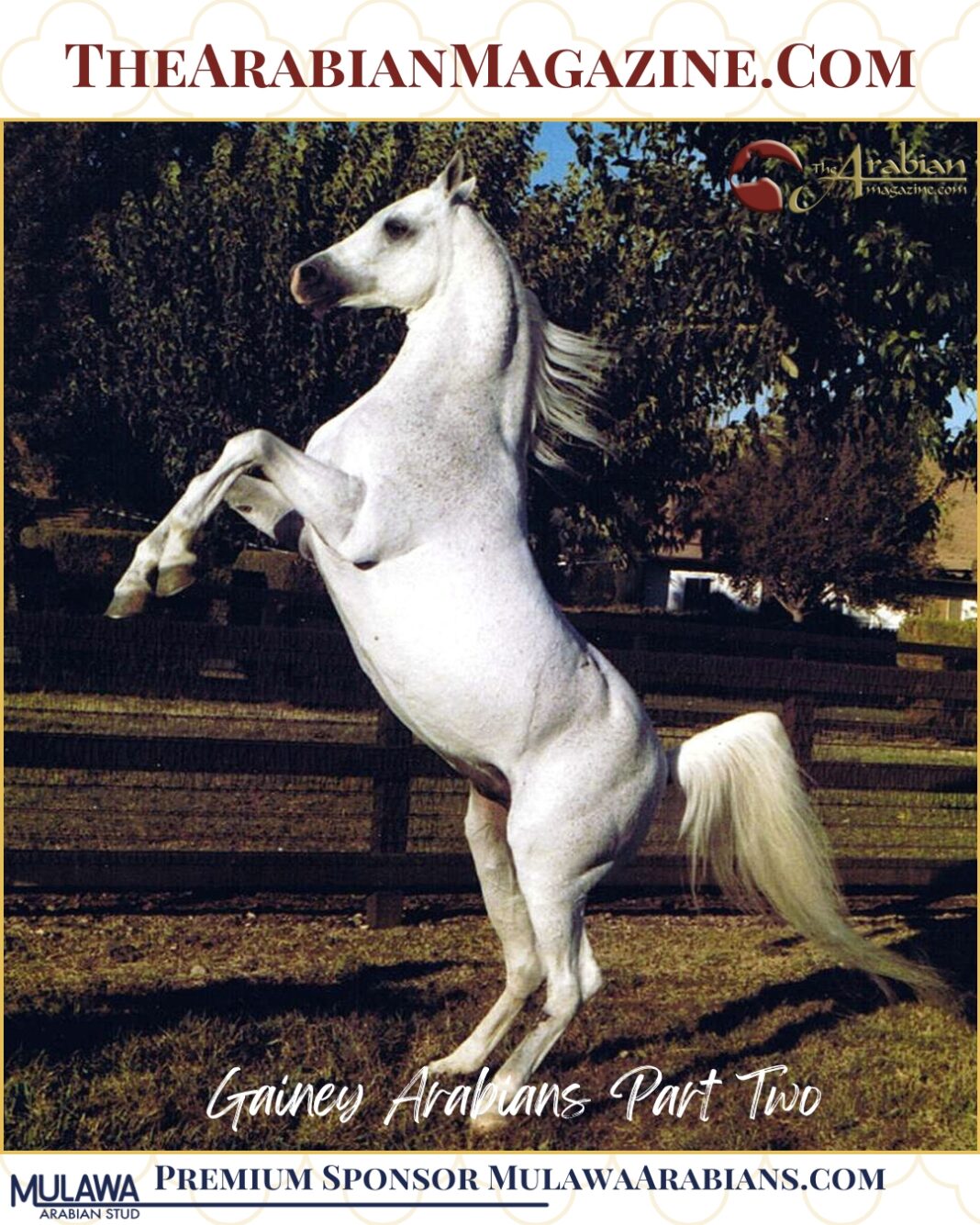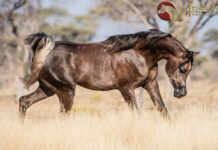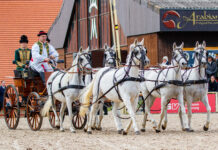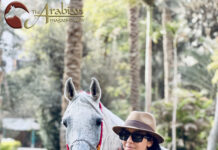Gainey Arabians remains one of the most influential non-straight Egyptian private breeding farms in the past 100 years. Founded in the late 1930s, Gainey Arabians became renowned for stallions such as Ferzon and Gai Parada, with horses bearing the ‘Gai’ prefix still significant in modern-day pedigrees. In the second part one of this excellent feature by Paul Atkinson, we look at how Gainey Arabians came to British shores. Click here for part one.
First shared in The Arabian Magazine Collectors’ Edition 2009.
The first ever Gainey horse in Britain
So it was that in 1983, Gillian Trimingham of the Grange Arabian Stud imported Gai Parada’s son Gai Gaspacho (Gai Parada x Gai Grise) to stand in Lincolnshire for two seasons.
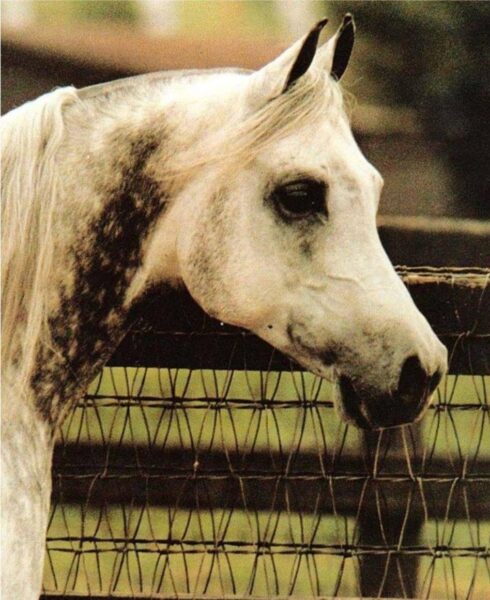
When he arrived in England, Gai Gaspacho was a young stallion, already a proven sire in the States, dark dappled grey, with the most refined, delicately-modeled head. His eyes were huge and black, his ears were neat and sharply tipped and his throat was pencil-fine. Gai Gaspacho’s neck was long and lightly arched and although his back might have been a shade long, his topline was strong, with long, particularly level quarters. His legs were straight and while he had less bone than was fashionable at the time, his tendons were clean, strong and steel-like. He was an excellent riding horse and took to driving in harness easily. Sadly, there was no time to show him. He had a full complement of mares, our own and visiting mares, including several illustrious British Champions. The quarantine demands and the long journey had taken their toll on his condition and he remained lean throughout his stay. Almost predictably, Gaspacho regained his body weight about one month before he left England on his return trip to the United States.
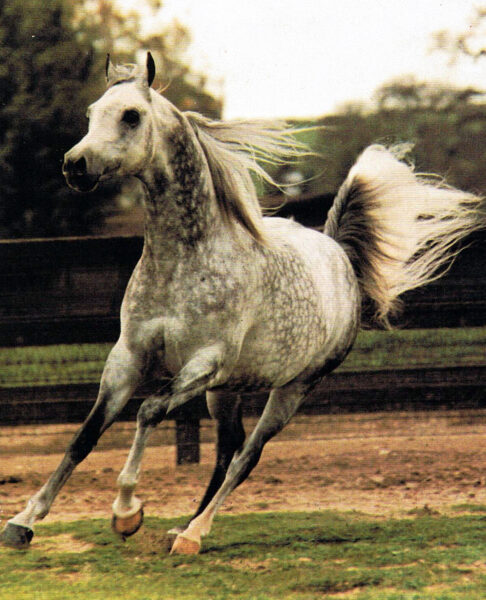
His pedigree was intensely linebred to Ferzon, with three crosses in the first three generations and his dam line was that of Mr Gainey’s wonderful aforementioned Gajala. His pedigree was almost entirely based on the horses exported to the USA from the Crabbet stud, with as many as 50 crosses to the Polish import Skowronek. The arrival of his first foal crop was awaited with great excitement and not a few qualms.
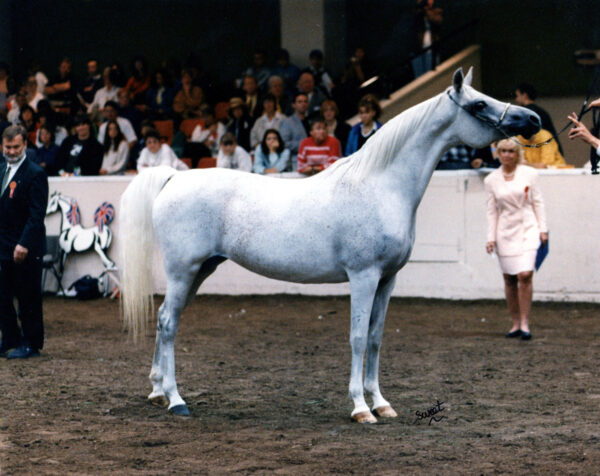
We need not have worried. The Gainey thread had wound its way effortlessly across the Atlantic and the experiment had worked. Gai Gaspacho’s first UK-bred offspring were typey, good-looking and hugely successful. From his first crop there were several top winning youngsters, including the British National Champion Fazleta, an exotic grey filly, with huge presence and flair. She was out of the Crystal Magician daughter Crystal Farosa. Similarly bred and almost equally successful was the beautiful bay Gai Gaspacho daughter Bai Gazella (ex Baidaa) who was the British National Reserve Champion Futurity Filly. It could be seen that the Gainey blood had provided the essential type and quality, especially from mares with solid structure.
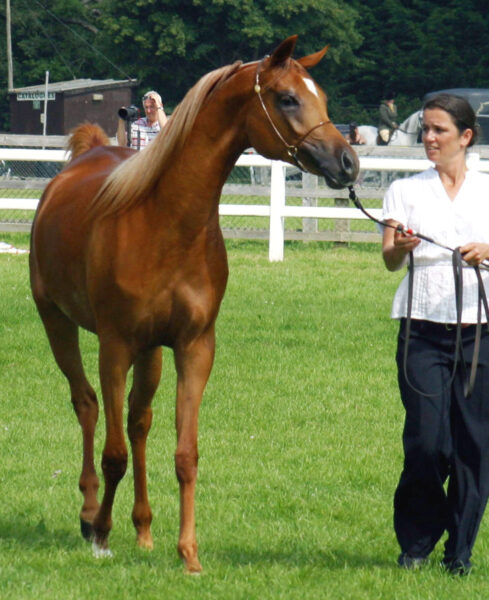
As they matured, this group of horses underlined the Gainey horses’ ability to go on and reproduce their qualities in their offspring. Grai Parasol (Gai Gaspacho x Pepita Bint Procyon) was sold to the Cullinghurst Stud and went on to establish her own dynasty when partnered with the head sire, Crystal Magician. The well known winners Crystal Ferzona and Crystal Fafalla were full sisters and both mares produced British National Champions, including the highly decorated filly, Crystal Fadishaa (by Psadisho Ibn Esstashan), who won the 2009 British National Filly Championship.
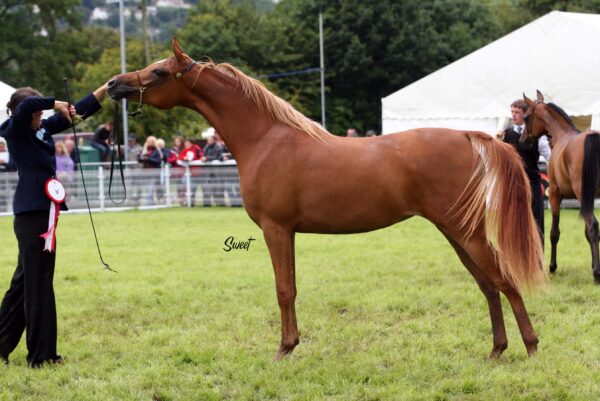
As this group of horses matured, they proved their inherited versatility. Grai Paragon (Gai Gaspacho x Al Shamsa) became one the country’s leading ridden horses of the day, winning at the highest level, including at the British National Show. The fantastic Fazleta (Gai Gaspacho x Crystal Farifi) also produced the top-winning ridden show horse, the beautiful bay Fferzan (by Ffatal Attraction), who interestingly also carries a line to Ferzon and another to the closely-related Ferseyn.

The Gainey stallion had performed well and had made a lasting impact on the breed in the UK. It was time to move on. When Gai Gaspacho returned to California, I soon followed with a strong hope to be able to persuade Dan J and Robin to let Gai Parada visit the UK for a while! Two things became quite obvious: I was not as keen a negotiator as Mr Gainey had been almost 40 years earlier when he was successful in acquiring Ferzon; and Dan and Robin were stronger at resisting any amount of persuasive tactics than Frank and Helen McCoy had been. The outcome was that Gai Parada stayed at home and the decision had to move on to which of the glorious younger stallions I should try for.
The second Gainey stallion arrives
The choice was slightly bewildering. The quality of horses made available was phenomenal and basically, there was nothing to choose between them except for the fact that one or two of the younger males were not old enough to have sired foals.
Robin encouraged me to take one of the stallions out on the trails and Gai Warsaw (Ferzon x Paleta by Comet) carried me sure-footedly over the mountain tracks and through the deep gullies while I pondered over the options. As dusk fell and Gai Warsaw started his descent back towards the farm, the idea hit me like a thunder bolt! I was sitting on him! Warsaw, like Gai Parada, was a wonderful son of Ferzon: he was correct, beautiful and as agile as a cat. The call was made to Mrs Trimingham back in England and with her authority and the Gainey’s generosity, Gai Warsaw’s travel arrangements were made.

Gai Warsaw was stronger built and more substantial than Gai Gaspacho, most likely because he was out of the Gainey’s imported Polish mare, the lovely Paleta (Comet x Planeta), whose dam produced Pikieta’s dam Platyna. Taking this partial outcross into account (Paleta, who was bred in Poland, carried two lines to the Crabbet-bred Skowronek son Naseem), Warsaw nevertheless conformed to the, by now, expected Gainey type, having a refined face, enormous eyes and huge quality, especially in his skin and the dryness of his features and his legs. Gai Warsaw had the most impressive hindquarters, which were broad, level and deep. This probably gave him the athleticism required to win the US National Stock Horse Championship and explained his agility under saddle. He was no slouch in harness either and he frequently transported guests to the Grange Arabian Stud on a tour of the estate, calmly passing heavy traffic along the way. When his owners came to visit him from California, it was with no little surprise – and a certain amount of shock – to be taken onto a fairly major road, seated in a vintage show carriage, with Warsaw nonchalantly being passed by juggernauts!

In England, where he was to stay for only one season, Gai Warsaw covered a wide variety of pure-bred mares and the results were excellent. From that foal crop, he produced the lovely Inass, whose dam Ivory Wings also produced Imad. Inass proved to be an excellent show horse in-hand and won in this country and amid top competition in Europe. As might be expected, she has bred on well and is the dam of the multiple-champion stallion G Idris (by Carmargue). On the ridden front, the Gai Warsaw offspring didn’t disappoint and his tall bay son Farazahd (ex Faminda) became a show winner in-hand and under-saddle.
The Gai Warsaw son Ibn Warsaw (ex Princess Melchia by Melchior) took the UK show world by storm and as a two year old, he became the British National Champion colt at Kempton Park. He was all set to make an impact as a superior sire when he died suddenly, following a hernia operation. This was a huge blow for UK breeders.
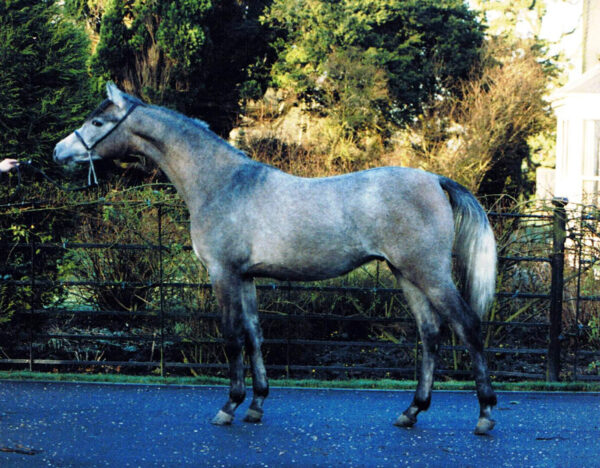
Further Gainey imports
Fortunately, the Gai Warsaw story didn’t end there, especially as far as the UK was concerned. The consistently determined breeding thread remained steadfast. Back in California, Gai Warsaw’s daughter Zee Radiance (ex Gai Sevilla) foaled a remarkable grey colt, sired by Gai Parada. Both of this colt’s parents carry close lines to Ferzon, both Parada and Warsaw were his sons and there are additional crosses to Ferzon in the pedigree. Dan and Robin had bred the colt tightly to ensure the fixing of the typical Gainey characteristics. They succeeded and the resulting colt was Gai Radiant, who was soon to make his name as an excellent Western Pleasure horse. In 1997 as a young stallion, he was imported to the UK along with his chestnut son Gai Radiant Star and Star’s full sister, Gai Radiant Dream, both out of the US National Champion Mare Gaishea. Also on the aeroplane was Gai Radiant Hope (ex Gai Anastasha).
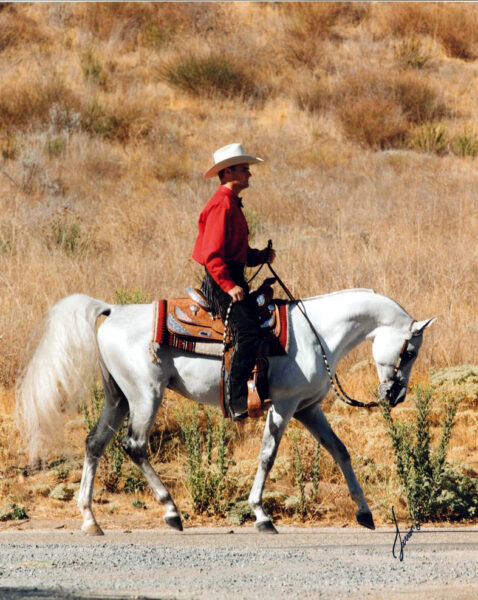
Soon after her importation, Gai Radiant Dream was to become a British National Champion Mare while Gai Radiant Star, himself a regional champion stallion, sired the multiple-National Ridden Champion and 2009 Ridden Arabian Horse of the Year, Dais (ex El Badoura). Robin says: “The continued validation of the diversity of our programme through the 2009 show wins of Gai Radiant Star’s son, Elustarius, is extremely heartening. Gainey horses have always been bred to be beautiful, tractable and athletic.” Another British bred in-hand star is the refined and elegant Cat Walk (Gai Radiant x Snow Dove), who has been extremely successful as a show horse and who seems set to make a valid contribution as a broodmare.
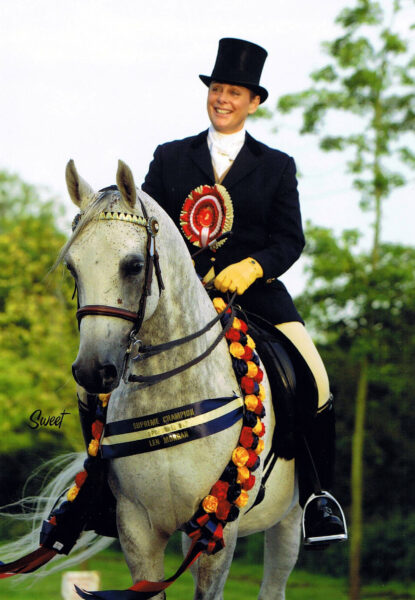
Continuing the vision
There can be little doubt that the introduction of Gainey blood to the UK was successful and rewarding. While it would be true to say that that they offered a re-introduction of already established bloodlines, there are important differences. The combination of those highly specific Gainey bloodlines – that had never been carried out before in Britain – has resulted in a special breeding group that differs phenotypically from many of the horses within the British Isles. Also, the lines have been so painstakingly linebred and inbred to fix the Gainey family’s ideal in type and quality, the group has become virtually homozygous in its breeding ability.
Robin adds: “Gainey Arabians has been so honoured to have exported several of our modified Crabbet-bred horses back to their homeland. The Arabians from our programme that were and are in England have made a very proud mark for our farm. It is exciting for us to think of the positive impact that the Gainey blood has had around the world. This influence continues in our young colt Gailen, who is a result of six generations of Gainey breeding, has five National Champions in his pedigree and is the next generation of Gainey blood available. We believe that he is a better colt at the same age than was his National Champion sire, Gai Monarch.”
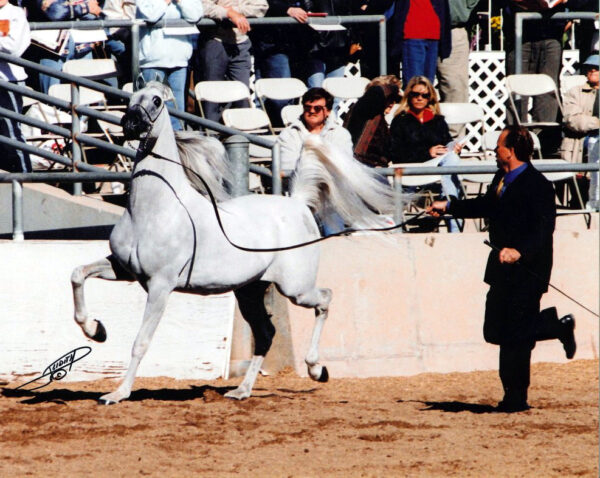

In the US and around the world, the Gainey horses continue to feature strongly at the highest levels. A-Jakarta (Jullyen el Jamaal x Gai Prescha), who was bred by Robin, is proving to be a great show horse and, predictably, a superior sire. His foals are showing the extreme promise his bloodlines would indicate, as is demonstrated in his beautiful 2009 son, Gai Mandaly (ex Gai Schara), who is perfectly able to represent his illustrious heritage. This young colt demonstrates admirably the long established, highly dependable Gainey traits of quality, athleticism and extreme beauty.
For more historical features from TheArabianMagazine.Com, click here.


